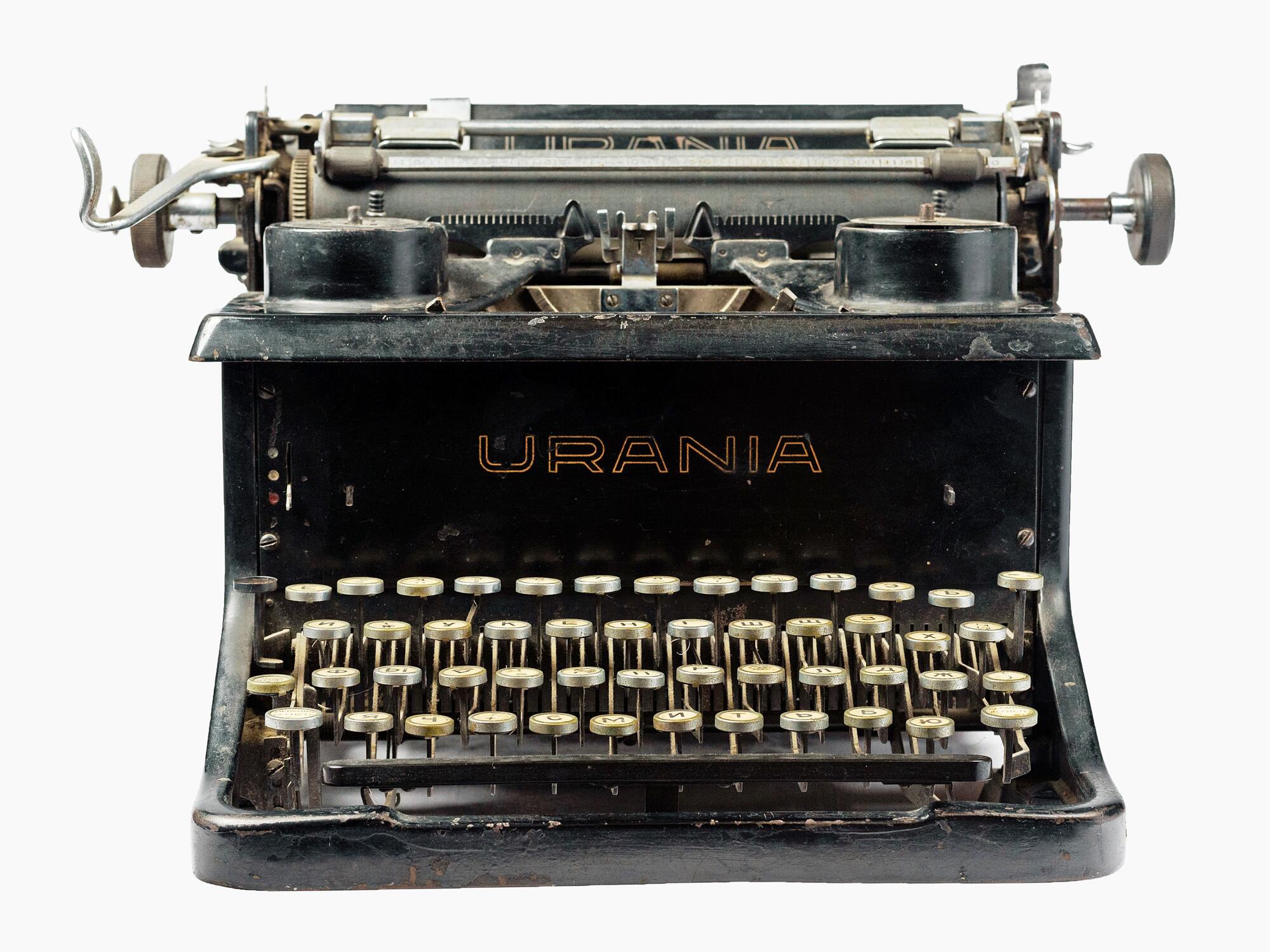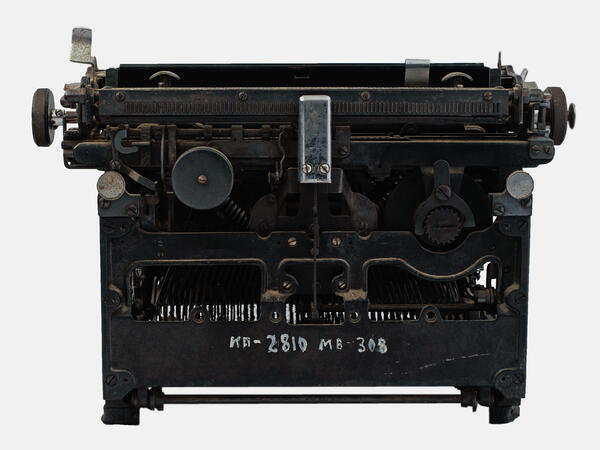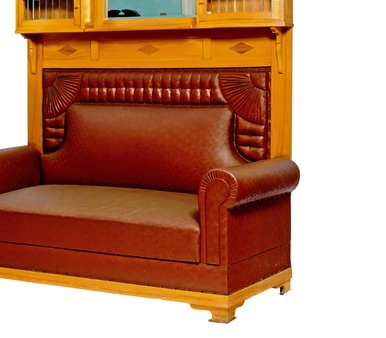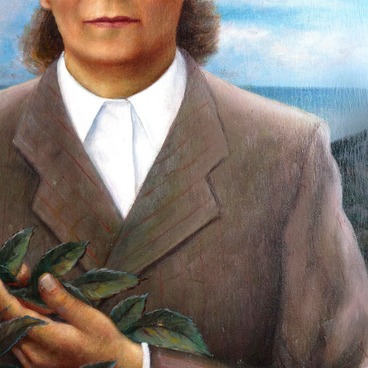The exhibition features a Urania typewriter with a Cyrillic keyboard, made in Germany presumably before World War II. This typewriter was used only by the secretaries of Sergey Sergeyev-Tsensky to reprint his manuscripts, not by the writer himself: he wrote his works exclusively by hand, mostly using a school fountain pen. His handwriting was distinctively calligraphic and elegant.
Sergeyev-Tsensky developed a habit of writing clean copies right away, without any drafts. This was prompted by an acute shortage of paper in Alushta in the early 1920s when even wrapping paper came in handy.
Sergey Sergeyev-Tsensky recalled,




